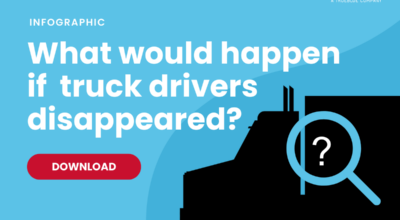 Infographics
Infographics
What would happen if truck drivers disappeared?
A world without truck drivers is not a pretty world. If truck drivers stopped working, even for a day, the ramifications would be far-reaching. What would the world look like with no truck drivers?